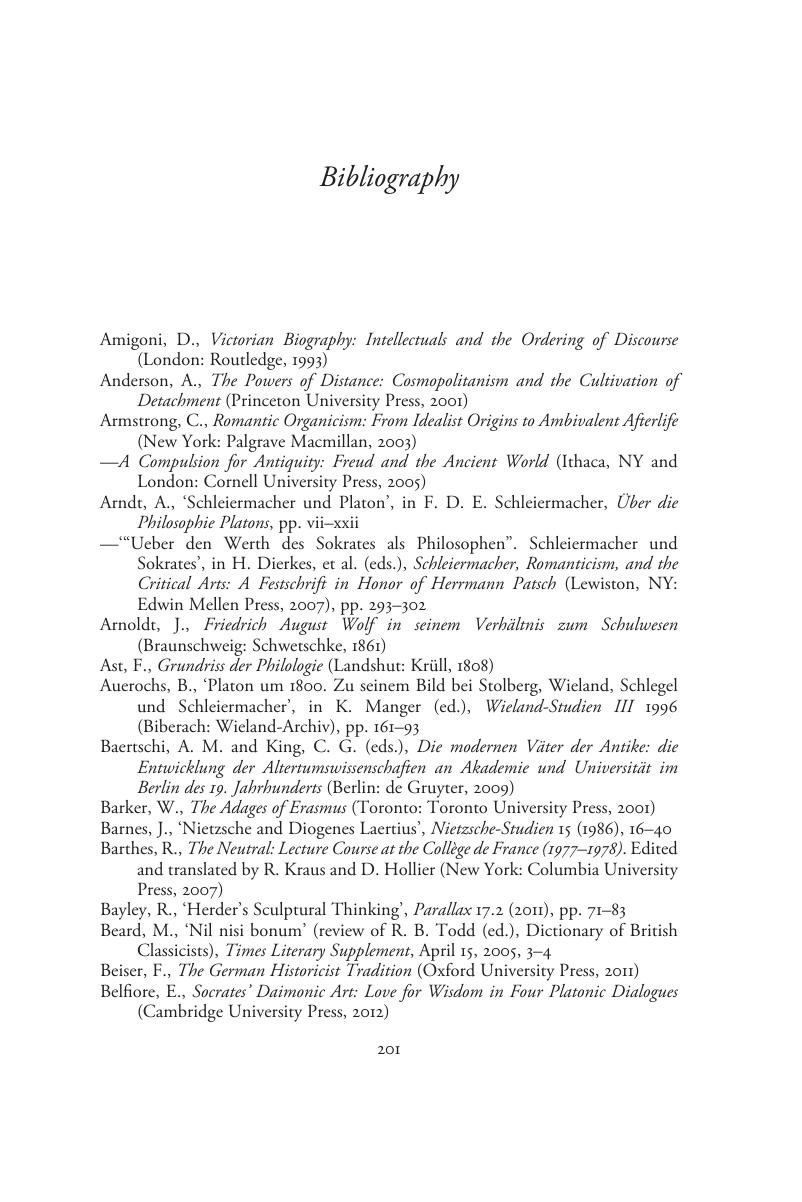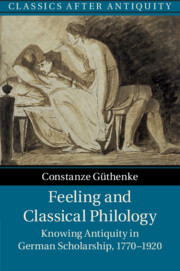Book contents
- Feeling and Classical Philology
- Classics after Antiquity
- Feeling and Classical Philology
- Copyright page
- Dedication
- Contents
- Series Editors’ Preface
- Preface
- Acknowledgements
- Introduction
- Chapter 1 The Potter’s Daughter
- Chapter 2 From the Symposium to the Seminar
- Chapter 3 ‘So That He Unknowingly and Delicately Mirrors Himself in Front of Us, As the Beautiful Often Do’
- Chapter 4 ‘Enthusiasm Dwells Only in One-Sidedness’
- Chapter 5 ‘The Most Instructive Form in Which We Encounter an Understanding of Life’
- Chapter 6 The Life of the Centaur
- Epilogue
- Bibliography
- Index
- References
Bibliography
Published online by Cambridge University Press: 28 February 2020
- Feeling and Classical Philology
- Classics after Antiquity
- Feeling and Classical Philology
- Copyright page
- Dedication
- Contents
- Series Editors’ Preface
- Preface
- Acknowledgements
- Introduction
- Chapter 1 The Potter’s Daughter
- Chapter 2 From the Symposium to the Seminar
- Chapter 3 ‘So That He Unknowingly and Delicately Mirrors Himself in Front of Us, As the Beautiful Often Do’
- Chapter 4 ‘Enthusiasm Dwells Only in One-Sidedness’
- Chapter 5 ‘The Most Instructive Form in Which We Encounter an Understanding of Life’
- Chapter 6 The Life of the Centaur
- Epilogue
- Bibliography
- Index
- References
Summary

- Type
- Chapter
- Information
- Feeling and Classical PhilologyKnowing Antiquity in German Scholarship, 1770–1920, pp. 201 - 219Publisher: Cambridge University PressPrint publication year: 2020



